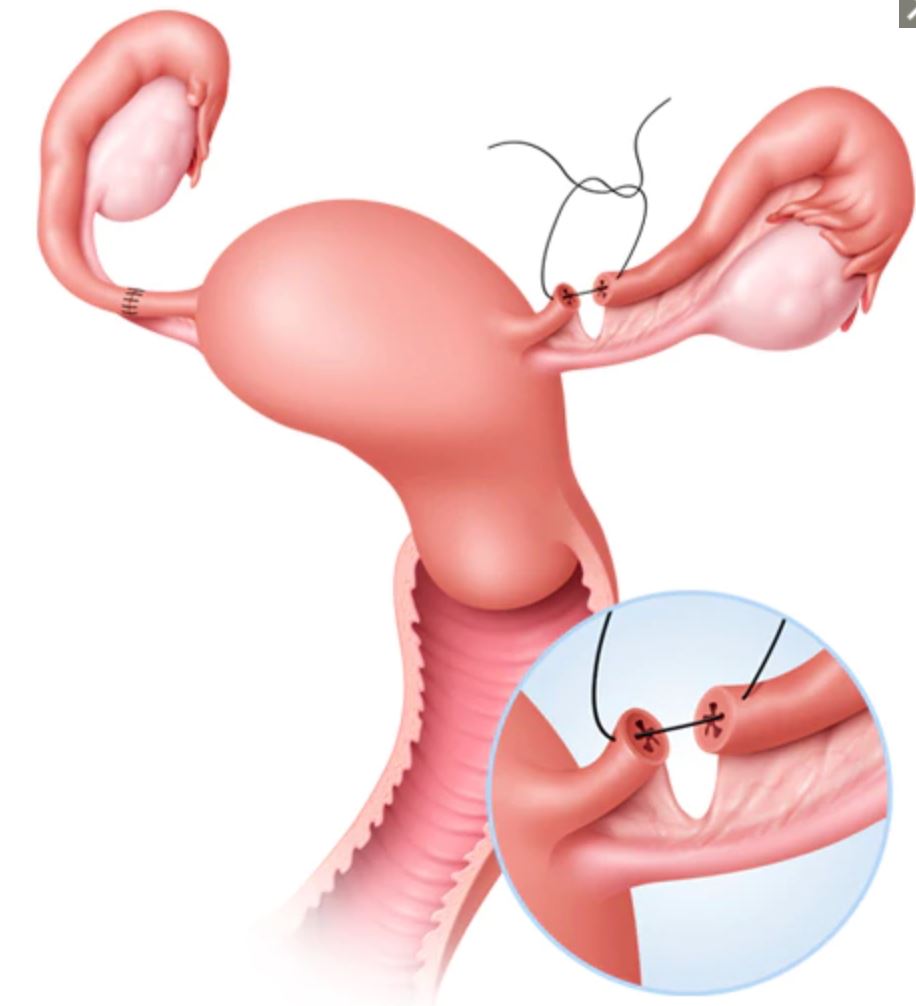A tubal ligation reversal is a procedure to restore fertility after a woman has had a tubal ligation — a procedure that cuts or blocks the fallopian tubes to prevent pregnancy. A tubal ligation is commonly referred to as “having your tubes tied.” During a tubal ligation reversal, the blocked segments of the fallopian tubes are reconnected to the remainder of the fallopian tubes. This may allow eggs to again move through the tubes and sperm to travel up the fallopian tubes to join an egg. Tubal ligation procedures that cause the least amount of damage to the fallopian tubes are the most likely to allow a successful tubal ligation reversal. Examples include sterilization with tubal clips or rings. Procedures that cause scarring to seal off the fallopian tubes, such as the Essure or Adiana systems, generally aren’t reversible.
OVERVIEW
WHY IS IT DONE
A tubal ligation reversal may allow a woman to get pregnant without further medical assistance. A tubal ligation reversal isn’t appropriate for everyone. Your health care provider will consider several factors to determine if tubal ligation reversal is likely to be successful, such as: Your age and body mass index The type of tubal ligation The extent of the damage to your fallopian tubes Remaining tubal length Other fertility factors, such as sperm and egg quality The success of a tubal ligation reversal procedure depends on a variety of factors. It’s more likely to be successful if you still have a large portion of healthy fallopian tube remaining. Tubal ligation reversal is more likely to be successful if your tubal ligation was originally done using clips or rings, rather than if segments of your fallopian tubes were burned in order to close them off (electrocautery).

Tubal Ligation Reversal
A tubal ligation reversal is a procedure to reverse a tubal ligation — when the fallopian tubes are cut or blocked to permanently prevent pregnancy. During a tubal ligation reversal, your doctor removes the obstructed area of the fallopian tubes and reattaches the fallopian tubes to allow pregnancy.
Risks
Risks associated with a tubal ligation reversal include: An inability to get pregnant after the procedure. Pregnancy rates following reversal of tubal ligation vary greatly depending on a woman’s age and other factors. Infection. Bleeding. Scarring of the fallopian tubes. Injury to nearby organs. Anesthesia complications. Ectopic pregnancy — when the fertilized egg implants outside the uterus, usually in a fallopian tube.
How You Prepare
Before you have a tubal ligation reversal, your doctor will likely: Explain the details of the procedure Discuss the likelihood of success and your ability to get pregnant after the procedure Discuss other options for pregnancy, such as in vitro fertilization (IVF) What you can expect A tubal ligation reversal can be done as an inpatient or outpatient procedure. During the procedure During a tubal ligation reversal, your doctor may use robotic or laparoscopic surgical equipment — small tubes attached to tiny cameras and surgical instruments — to make a tiny incision on your abdomen, and reattach your fallopian tubes. Alternatively, your doctor may make a small incision in your abdomen (minilaparotomy) and expose your uterus, fallopian tubes and ovaries. The doctor will then: Remove blocked fragments of the fallopian tube Attempt to repair the tube with tiny absorbable stitches Your doctor may not be able to reattach one or both of your fallopian tubes if too much was removed during the tubal ligation.
After The Procedure
You can slowly resume your normal activities as you begin to feel better, which usually takes one or two weeks. Your stitches will dissolve and won’t require removal. Ask your doctor when to make a follow-up appointment so you can be sure you’re healing properly.
Results
Success rates after a tubal ligation reversal can vary widely, depending on factors such as maternal age and the type of tubal ligation procedure that was initially done. While it’s difficult to predict the odds of pregnancy after this procedure, younger women — particularly those 35 and under — tend to have much better success rates. In cases where tubal ligation reversal isn’t successful, in vitro fertilization (IVF) may be an alternative option to assist you in becoming pregnant.

